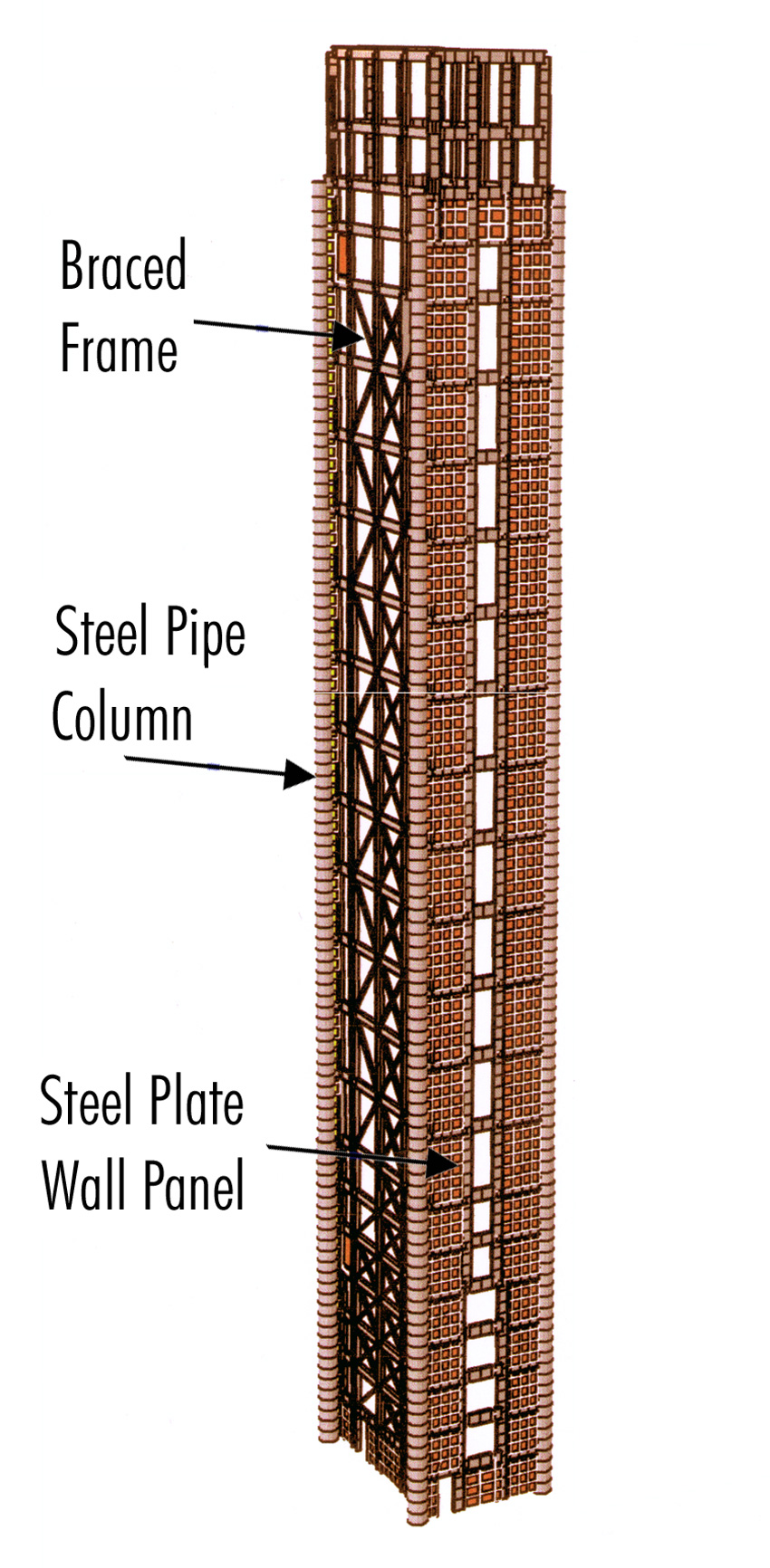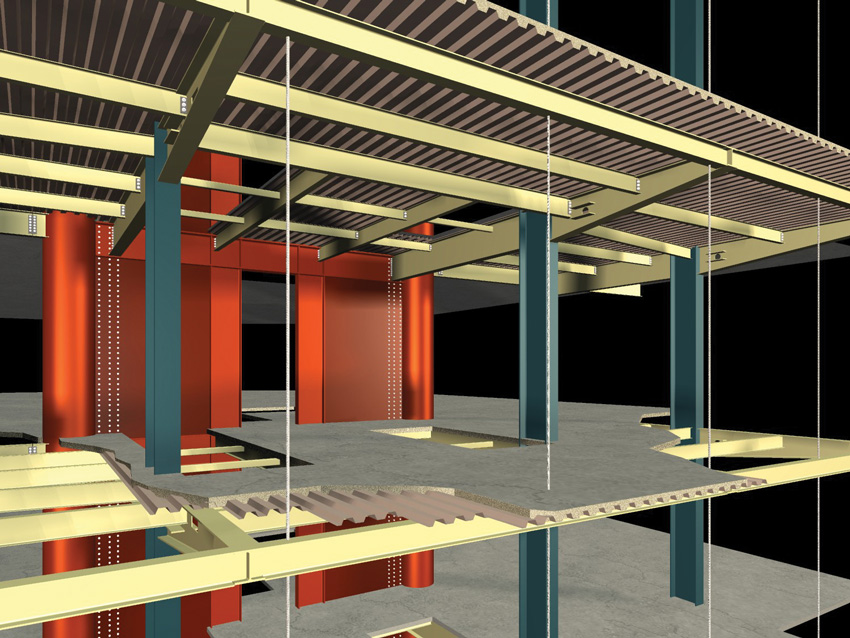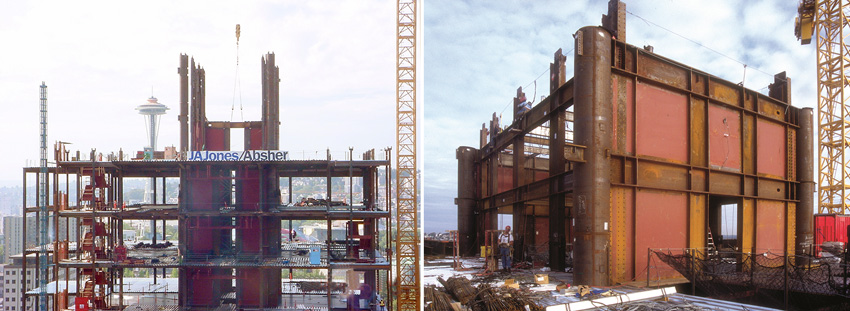The Core of the Matter
U.S. Federal Courthouse in Seattle
Developing its own take on a composite structural system, MKA designed a unique system that combines steel plate and concrete-filled pipe to deliver gravity, wind, and seismic protection for the 23-story U.S. Federal Courthouse in Seattle.

Photo courtesy of Magnusson Klemencic Associates/Frank Ooms
A unique steel plate and concrete-filled pipe composite system deliver a high level of seismic and wind protection at for the 23-story U.S. Federal Courthouse in Seattle.
The combined steel-braced frame with steel wide-flange beams and columns, steel plate wall panel, and concrete-filled steel pipe columns eliminate the need for a full perimeter backup moment frame, thereby delivering open, flexible floor plates. On the building’s north and south side, 1-inch-thick steel plates are welded between the 5-foot-diameter pipe columns, while conventional steel framing was specified for the other elevations. Meanwhile, the core runs through the majority of the building height.

Photo courtesy of MKA
A steel-braced frame, concrete-filled steel pipe columns, and steel plate wall panel make up the high-performing composite system that meets the U.S. General Services Administration’s strict structural requirements.

Image courtesy of Magnusson Klemencic Associates
This Seattle U.S. Federal Courthouse rendering depicts the connection of cantilevered steel framing with steel cables running through the floors to minimize floor vibration.
The unique structural core design provides resistance for more than two-thirds the weight of the building and all of the wind and earthquake forces.
Capitalizing on both concrete’s compressive strength and structural steel’s seismic energy-absorbing properties, the steel plates are designed to buckle and bend in the event of an earthquake, while protecting the surrounding framework holding up the building. Furthermore, through each seismic cycle for buckling and bending, the design resists seismic forces even further.

Photos courtesy of Magnusson Klemencic Associates
The floors and steel plate shear walls are seen as the core is being constructed at the Seattle courthouse.
“With the steel plate shear wall, the courthouse’s robustness requirements were met with a much thinner wall thickness,” explains Hooper.
In fact, the U.S. General Services Administration funded independent testing on the new structural system and discovered that it exceeded performance of all steel structural methods currently in the building code. As a result, the GSA has adopted the composite system as a model for future secure government building construction.
Additional benefits delivered by the composite system include:
- The building’s primary system and the backup system are co-planar, reducing cost and providing better earthquake performance.
- Because the core is lighter than an all-concrete core, overall earthquake demands on the lateral system are reduced.
- The system more easily facilitates larger openings through the core, offering increased layout flexibility.
- The composite pipe columns use less steel than comparable all-steel sections and serve as erection columns, formwork, vertical reinforcement, shear reinforcement, and seismic-confinement reinforcement, further reducing cost and improving performance through “perfect spiral reinforcing.”
- The 10,000-psi high-strength concrete developed for use in the pipe columns further enhances economics and performance, providing greater stiffness and lower net cost than conventional concrete.
- The steel plate shear wall panels provide the greatest energy absorption of any primary structural system during a major seismic event, while simultaneously offering excellent lateral stiffness for smaller events and wind.
- A single trade can erect the building, and there is no need for labor-intensive moment-frame welds at the exterior, as the high-strength concrete is pumped from the bottom of the pipe columns after steel erection.
Made mostly from steel, the core system is much lighter than all-concrete systems, delivering estimated savings of 10 percent in foundation costs.
Taken together, the noninvasive structural core supports column-free courtrooms with 20-foot-high ceilings and a large, soaring all-glass lobby with a reflecting pool.









